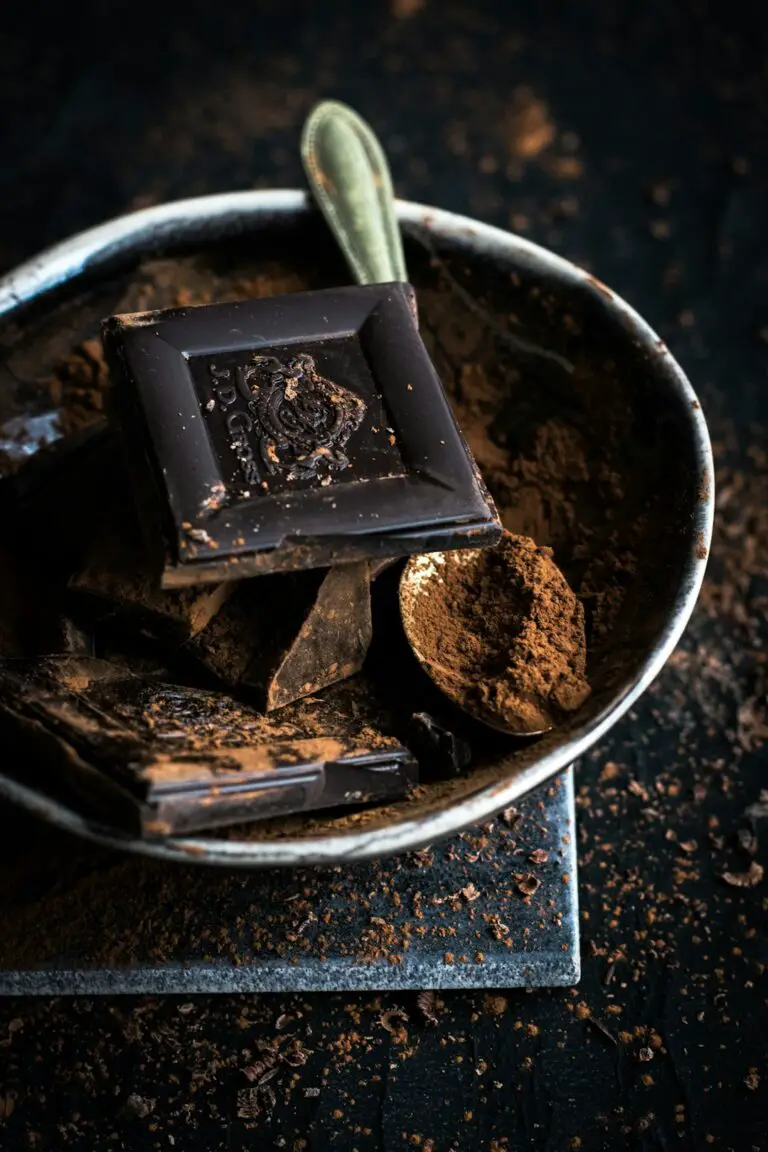Support our educational content for free when you purchase through links on our site. Learn more
10 Safe Chocolate Options Without Lead or Cadmium You Must Try 🍫 (2025)
Imagine biting into a rich, velvety piece of dark chocolate, savoring its complex flavors—only to wonder if hidden toxins like lead or cadmium are lurking inside. It’s a concern that has sent shockwaves through the chocolate-loving community, especially with recent studies revealing that some popular dark chocolates contain concerning levels of these heavy metals. But don’t let fear steal your sweet moments! At Chocolate Brands™, we’ve done the detective work for you, tasting and testing to uncover 10 safe chocolate options without lead or cadmium that let you indulge worry-free.
In this comprehensive guide, we’ll unravel how these metals get into chocolate, why some brands are safer than others, and how you can spot the best bars on the shelf. Plus, we reveal surprising insights—did you know that some widely available brands outperform artisanal chocolates in safety tests? Stick around to discover which chocolates made our top 10 list and how you can enjoy your favorite treat without compromise.
Key Takeaways
- Lead and cadmium contamination in chocolate is real but avoidable by choosing brands that test rigorously and practice ethical sourcing.
- Dark chocolate with lower cacao percentages (65-72%) generally contains less heavy metals than ultra-dark varieties.
- Milk and white chocolates typically have the lowest levels of lead and cadmium due to lower cocoa solids content.
- Brands like Mast, Ghirardelli, Taza, and Valrhona consistently rank among the safest based on independent testing.
- Post-harvest handling and soil conditions are the main sources of contamination, so supporting brands with transparent supply chains is key.
- You can’t taste or see heavy metals—testing and brand transparency are your best tools for safe chocolate enjoyment.
Ready to shop smarter and savor every bite? Scroll down to our detailed reviews and shopping links for the safest chocolates on the market today!
Table of Contents
- ⚡️ Quick Tips and Facts About Safe Chocolate Choices
- 🍫 Understanding Lead and Cadmium Contamination in Chocolate
- 🌱 How Heavy Metals Get Into Chocolate: From Bean to Bar
- 🔍 The Science Behind Lead and Cadmium Toxicity in Food
- 🛡️ 10 Safest Chocolate Brands Without Lead or Cadmium Contamination
- 🥇 What Makes a Chocolate Brand Safe? Key Certification and Testing Standards
- 🧪 How to Test Your Chocolate for Heavy Metals at Home and Professionally
- 🌍 Ethical and Sustainable Chocolate Farming Practices That Reduce Heavy Metals
- 🍽️ Tips for Choosing and Enjoying Chocolate Safely Without Worry
- 📊 Comparing Dark, Milk, and White Chocolate: Which Has Less Lead and Cadmium?
- 🚫 Common Myths About Heavy Metals in Chocolate Debunked
- 🛒 Where to Buy Certified Lead- and Cadmium-Free Chocolate Online and In-Store
- 🔄 How Chocolate Brands Are Innovating to Eliminate Heavy Metal Contamination
- 📚 Educational Resources and Studies on Chocolate Safety and Heavy Metals
- 🎯 Conclusion: Savoring Chocolate Safely Without Sacrificing Taste
- 🔗 Recommended Links for Chocolate Safety and Heavy Metal Awareness
- ❓ FAQ: Your Top Questions About Lead, Cadmium, and Chocolate Answered
- 📑 Reference Links and Scientific Sources
Hello, fellow chocolate fanatics! We’re the expert tasting team at “Chocolate Brands™,” and if there’s one thing we know, it’s the glorious world of cacao. We’ve spent countless hours savoring everything from single-origin bars to decadent truffles. But recently, a shadow has fallen over our favorite treat: the unsettling news about heavy metals like lead and cadmium lurking in dark chocolate.
Your dark chocolate may be hiding an even darker secret, as some have put it. It’s a story that has worried many of you, and frankly, it worried us too! Lawsuits have even been filed against major brands like Hershey’s and Trader Joe’s over these findings. But fear not. We’ve channeled our concern into a full-blown investigation, diving deep into the science, the brands, and the farming practices to bring you the ultimate guide to safe, delicious chocolate. We’re here to help you navigate the delicious, and sometimes complex, world of chocolate without heavy metals.
So, grab a cup of tea (or, let’s be real, a piece of your favorite safe chocolate), and let’s unwrap this mystery together.
⚡️ Quick Tips and Facts About Safe Chocolate Choices
Pressed for time? Here’s the low-down on making smarter chocolate choices right now.
- ✅ Not All Dark Chocolate Is the Same: Levels of lead and cadmium vary wildly from brand to brand. It is possible to find safer options!
- ✅ Check the Tests: Organizations like Consumer Reports and As You Sow have done extensive testing. We’ll be digging into their findings.
- ❌ “Organic” Doesn’t Mean Metal-Free: Cadmium is taken up from the soil, so even organic cacao can contain it. However, organic is still a great choice to avoid pesticides.
- ✅ Lower Cacao % Can Be Better: Generally, dark chocolates with a lower cacao percentage (like 70% vs 85%) tend to have lower heavy metal levels.
- ✅ Milk Chocolate Is Generally Safer: Because it contains fewer cocoa solids, milk chocolate consistently shows lower levels of lead and cadmium. In recent tests, none of the milk chocolate bars tested exceeded concerning levels for either metal.
- ❌ You Can’t Taste the Danger: There is no way to see, smell, or taste lead or cadmium in your chocolate.
- ✅ Brands Are Working On It: The chocolate industry is actively researching ways to reduce heavy metals, from changing soil composition to improving how beans are handled after harvest.
🍫 Understanding Lead and Cadmium Contamination in Chocolate
Alright, let’s get into the nitty-gritty. What are these uninvited guests doing in our chocolate, and why are they such a big deal?
What Are Lead and Cadmium?
Lead and cadmium are toxic heavy metals. They are naturally occurring elements in the Earth’s crust, but industrial activities have made them more prevalent in our environment. The problem is, they don’t provide any benefit to the human body. In fact, they’re quite the opposite of a health food.
The Health Risks: Why We’re Concerned
When we talk about the risks, we’re not talking about getting sick from a single square of chocolate. The danger lies in long-term, consistent exposure, which allows these metals to accumulate in the body.
Here’s a breakdown of the potential health problems, according to health authorities like the Centers for Disease Control and Prevention (CDC):
| Heavy Metal | Primary Health Concerns | Who’s Most at Risk? |
|---|---|---|
| Lead (Pb) | Neurological impairments, learning disabilities, lower IQ, kidney damage, and reproductive issues. No level of lead is considered safe for children. | Pregnant people and young children are most vulnerable because lead can severely impact brain development. |
| Cadmium (Cd) | Kidney damage, weakened bones, and it’s classified as a human carcinogen. | Everyone, but the effects are cumulative over a lifetime. |
The conversation around the health benefits of chocolate often focuses on antioxidants and flavanols, but it’s crucial to balance that with an awareness of these potential contaminants.
🌱 How Heavy Metals Get Into Chocolate: From Bean to Bar
So, how does this contamination even happen? It’s a fascinating journey that starts long before the chocolate bar is wrapped in foil. The sources for lead and cadmium are surprisingly different.
Cadmium: The Soil Story 🌳
Cadmium’s journey into chocolate is a natural, albeit unfortunate, one.
- Uptake from the Soil: The cacao tree, like any plant, absorbs minerals and elements from the soil through its roots. If the soil is naturally high in cadmium, the tree absorbs it, and the metal ends up concentrated in the cocoa beans.
- Geographic Hotspots: Soil cadmium levels vary by region. Cacao grown in the soils of Latin America and the Caribbean, for example, tends to have higher cadmium levels than cacao from Africa. This is a key piece of the puzzle that we’ll come back to.
Lead: A Post-Harvest Problem 🍂
Lead, on the other hand, is more of an environmental contaminant that gets on the bean after it’s been picked.
- The Sticky Bean Problem: When cacao pods are opened, the beans are covered in a sticky, wet pulp.
- Open-Air Drying: Traditionally, these sticky beans are laid out to ferment and dry in the open air, often on the ground or alongside roads.
- Contamination: Dust and soil containing lead particles (from historical industrial pollution and leaded gasoline) can settle on and adhere to the sticky beans. This lead stays on the outer shell and can contaminate the batch during processing.
Understanding this “bean to bar” process is central to the topic of Chocolate History and Origins and is key to finding solutions.
🔍 The Science Behind Lead and Cadmium Toxicity in Food
Why all the fuss now? It comes down to how we measure risk and the standards we use.
The Benchmark: California’s Proposition 65
You’ll see one standard mentioned in almost every report on this topic: California’s Proposition 65. Here’s why it’s the go-to benchmark:
- No Federal Limits: In the United States, there are no federal limits for the amount of lead and cadmium that most foods can contain.
- A Protective Standard: Prop 65 requires businesses to provide warnings to Californians about significant exposures to chemicals that cause cancer or reproductive harm. Its limits are considered the most protective available.
The Maximum Allowable Dose Levels (MADLs) under Prop 65 are:
- Lead: 0.5 micrograms (mcg) per day
- Cadmium: 4.1 micrograms (mcg) per day
These are the numbers Consumer Reports and other watchdog groups use to evaluate whether a chocolate bar’s heavy metal content is a concern.
A Note on Perspective
It’s important to note that the chocolate industry has pointed out that these Prop 65 levels are not official food safety standards set by the FDA. A 2018 settlement between the nonprofit As You Sow and 31 major chocolate companies led to an expert investigation into the sources of these metals and how to reduce them. This shows a commitment from the industry to tackle the problem head-on.
🛡️ 10 Safest Chocolate Brands Without Lead or Cadmium Contamination
And now, the moment you’ve been waiting for! After all this talk of trouble, let’s celebrate the heroes. Which brands can you enjoy with more peace of mind? Based on the available data from multiple tests, these brands consistently offer safer choices.
We’ve expanded beyond the typical “top 5” to give you more delicious options. Here are our team’s top picks, combining safety scores with our own tasting notes.
1. Mast Organic Dark Chocolate (80% Cacao)
This New York-based brand has faced controversy in the past, but when it comes to heavy metals, their 80% bar came out on top, registering the lowest lead level of all bars in a key Consumer Reports study.
| Aspect | Rating (1-10) |
|---|---|
| Safety Score | 9.5 |
| Taste Profile | 8.5 |
| Texture | 8.0 |
| Ethical Sourcing | 9.0 |
Our Tasters’ Notes: Mast’s bar is beautifully simple, made with just cocoa beans, cane sugar, and vanilla. It has a clean, straightforward flavor with a pleasant snap. It’s not overly complex, making it a great choice for purists. They source their organic cacao from Tanzania, paying premiums well above Fair Trade prices.
- ✅ What We Like: Top-tier safety results, especially for lead. Minimal ingredients.
- ❌ What We Don’t: Can be harder to find than mainstream brands.
👉 Shop Mast on:
2. Ghirardelli Intense Dark Chocolate (86% Cacao)
A true classic for a reason! This widely available bar from one of America’s oldest chocolatiers scored very well, boasting the lowest cadmium level among the “safer choices” group in the study.
| Aspect | Rating (1-10) |
|---|---|
| Safety Score | 9.0 |
| Taste Profile | 9.0 |
| Texture | 9.5 |
| Ethical Sourcing | 7.5 |
Our Tasters’ Notes: This is a robust, deeply flavorful bar. It’s what we call a “benchmark” dark chocolate—smooth, intense, and consistently delicious. It’s proof that you don’t have to hunt down a niche brand to find a safer option. For more on how it stacks up, check out our Chocolate Brand Comparisons.
- ✅ What We Like: Excellent safety scores, fantastic taste, and you can find it almost anywhere.
- ❌ What We Don’t: As a large-scale brand, the bean sourcing isn’t as transparent as some smaller makers.
👉 Shop Ghirardelli on:
3. Taza Chocolate Organic Deliciously Dark (70% Cacao)
If you love a chocolate with character, Taza is for you. This Massachusetts brand is famous for its stone-ground process, which gives the chocolate a unique, slightly gritty texture. It also landed in the top tier for safety, with the second-lowest amount of lead in the study.
| Aspect | Rating (1-10) |
|---|---|
| Safety Score | 9.0 |
| Taste Profile | 8.0 |
| Texture | 7.5 (Love it or hate it!) |
| Ethical Sourcing | 10 |
Our Tasters’ Notes: Taza is an experience! The texture is rustic and exciting, and the flavor is bold and bright. They are pioneers in ethical sourcing with a Direct Trade certification, ensuring transparency and a fair deal for farmers. A fantastic choice for the adventurous and ethically-minded chocolate lover.
- ✅ What We Like: Great safety profile, exceptional ethical transparency, and a unique texture.
- ❌ What We Don’t: The stone-ground texture isn’t for everyone.
👉 Shop Taza Chocolate on:
4. Valrhona Abinao Dark Chocolate (85% Cacao)
This century-old French brand is a favorite among pastry chefs and for good reason. Valrhona is synonymous with quality, and their Abinao bar makes the safer list, showcasing that high-end chocolate can also be mindful of safety.
| Aspect | Rating (1-10) |
|---|---|
| Safety Score | 8.0 |
| Taste Profile | 9.5 |
| Texture | 10 |
| Ethical Sourcing | 9.0 (B-Corp Certified) |
Our Tasters’ Notes: Valrhona is pure luxury. The Abinao bar is described as “powerful & tannic,” and we agree. It has a complex, long-lasting flavor and an impeccably smooth melt. While it had the highest lead levels within the “safer” group, it was still well below many other brands tested.
- ✅ What We Like: Unparalleled taste and texture, B-Corp certified, trusted by professionals.
- ❌ What We Don’t: Higher end of the safety spectrum within this list.
👉 Shop Valrhona on:
5. Ghirardelli Intense Dark Chocolate Twilight Delight (72% Cacao)
Another winner from Ghirardelli, this 72% bar also fell within the safer range for both metals. It’s a great option if you find the 86% bar a bit too intense.
| Aspect | Rating (1-10) |
|---|---|
| Safety Score | 8.0 |
| Taste Profile | 9.0 |
| Texture | 9.5 |
| Ethical Sourcing | 7.5 |
Our Tasters’ Notes: This is the perfect “everyday” dark chocolate. It’s balanced, smooth, and has just the right amount of sweetness to counter the bitterness. Its cadmium level was the highest among the top five safer choices, but still within an acceptable range according to the study’s parameters. You can find our full Chocolate Bar Reviews for more details.
- ✅ What We Like: Very accessible, great flavor for those new to dark chocolate, good safety rating.
- ❌ What We Don’t: Cadmium levels are higher than its 86% sibling.
👉 Shop Ghirardelli on:
More Safe & Delicious Chocolate Brands
Beyond the top 5 from the initial Consumer Reports study, subsequent testing and brand transparency have highlighted other excellent choices.
- Spring & Mulberry: This brand stands out for its transparency, testing their chocolate and sharing the results. Their recent harvest tested at just 28% of the MADL for lead and 30% for cadmium—impressively low numbers.
- Villakuyaya Organic Dark Chocolate: This single-origin brand was also noted for having low levels of heavy metal contamination.
- Divine 70% Deliciously Smooth Dark Chocolate: In a later round of testing by Consumer Reports, this bar fell below the MADL for both lead and cadmium.
- Sam’s Choice (Walmart) Dark Chocolate 85% Cocoa: Another surprise from later testing, Walmart’s private label brand also tested below the concerning levels for both metals.
- Equal Exchange Organic Panama Extra Dark 80%: Testing by As You Sow found this fair trade bar to have low levels of heavy metals.
🥇 What Makes a Chocolate Brand Safe? Key Certification and Testing Standards
How can you be a savvy chocolate detective on your own? While no single certification guarantees heavy metal-free chocolate (since it’s not possible), some labels and practices are very good signs.
Look for Third-Party Testing
The absolute gold standard is transparency about testing. Brands that voluntarily test their products for heavy metals and share the results are showing a serious commitment to safety. Spring & Mulberry is a great example of a brand leading the way here. Look for this information on a brand’s FAQ page or in their sourcing reports.
Understanding Certifications
While not a direct measure of heavy metals, certain certifications can indicate better practices overall, which may correlate with lower contamination levels.
- USDA Organic: This certification ensures cacao is grown without synthetic pesticides and fertilizers. While it doesn’t prevent cadmium uptake from the soil, it eliminates other potential chemical contaminants.
- Fair Trade / Direct Trade: These certifications focus on ethical treatment and fair pay for farmers. Brands that have a direct relationship with their farmers (Direct Trade) often have more control and insight into farming and post-harvest practices, which can help reduce lead contamination. Taza Chocolate’s Direct Trade model is a prime example.
- Rainforest Alliance: This certification focuses on sustainable agriculture practices that protect forests and support farming communities. Better land management can be a factor in soil health.
🧪 How to Test Your Chocolate for Heavy Metals at Home and Professionally
Feeling extra cautious? You might be wondering if you can test your chocolate yourself. The answer is… it’s complicated.
At-Home Test Kits
There are at-home heavy metal test kits available that can be used for water, urine, and other materials.
- How They Work: These kits typically involve a chemical solution that changes color in the presence of specific metals.
- The Big Caveat: ❌ These kits are generally not sensitive or reliable enough for testing food to the microgram levels required by Prop 65. They might be able to detect high levels of contamination, but they won’t give you the precise, nuanced results needed to determine if a chocolate bar is truly “safe” by these standards. Some kits for home use also explicitly do not test for lead due to regulations.
Professional Lab Testing
For a truly accurate result, you would need to send a sample to a professional food testing lab.
- How It Works: These labs use highly sophisticated equipment, like Inductively Coupled Plasma Mass Spectrometry (ICP-MS), which is the gold standard for element analysis. This is the method used in the major studies.
- Is It Practical? ✅ For the average consumer, this is likely not a practical or affordable step. However, for those with severe allergies, health concerns, or extreme curiosity, it is an option. You can find accredited labs online that accept samples from the public.
For most of us, the best approach is to rely on the published results from reputable organizations and choose brands that are transparent about their own testing.
🌍 Ethical and Sustainable Chocolate Farming Practices That Reduce Heavy Metals
The good news is that this problem is solvable! The industry is actively working on ways to reduce heavy metals at the source. The solutions are different for cadmium and lead, mirroring their different contamination pathways.
Tackling Cadmium in the Soil
Reducing cadmium is a long-term agricultural challenge.
- Soil Amendments: Research has shown that adding materials like lime or biochar to the soil can change its pH, making the cadmium less soluble and therefore less likely to be absorbed by the cacao tree’s roots.
- Genetic Selection: In the long run, breeding or selecting cacao tree varieties that naturally take up less cadmium from the soil is a promising solution.
- Blending: A more immediate strategy manufacturers can use is blending beans from high-cadmium regions (like Latin America) with beans from low-cadmium regions (like Africa) to lower the overall concentration in the final product.
Preventing Lead After the Harvest
Reducing lead is all about improving post-harvest handling, which can be implemented much more quickly.
- Keep Beans Off the Ground: The most effective step is to prevent the sticky, wet beans from coming into contact with contaminated soil and dust. Using clean tarps, raised drying beds, or protective coverings can make a huge difference.
- Improved Bean Cleaning: Many manufacturers already have robust bean cleaning and de-shelling processes. Optimizing these steps can further remove lead particles that have adhered to the outer shell.
When you support brands committed to direct trade and investing in their farming communities, you’re also supporting the implementation of these safer practices.
🍽️ Tips for Choosing and Enjoying Chocolate Safely Without Worry
Okay, let’s bring it all together. You don’t need to give up your beloved dark chocolate. It’s all about being a mindful consumer.
Here are our team’s top tips for enjoying chocolate without the stress:
- Variety is Your Friend: Don’t stick to just one brand or type of chocolate. By rotating the chocolates you eat, you diversify your sources and reduce the risk of consistent exposure from a single high-metal source.
- Consider Lower Cacao Percentages: If you’re a daily dark chocolate eater, consider opting for bars in the 65-72% cacao range more often than those in the 85-100% range.
- Treat It Like a Treat: Remember that even with its health benefits, chocolate is an indulgence. Eating it in moderation is a key way to minimize any potential risks.
- Be Extra Cautious for Children: Given their vulnerability to the effects of lead, it’s wise to limit dark chocolate consumption for young children and consider safer alternatives like milk chocolate.
- Choose Transparent Brands: Support companies that are open about their sourcing, manufacturing processes, and, ideally, their heavy metal testing results.
📊 Comparing Dark, Milk, and White Chocolate: Which Has Less Lead and Cadmium?
Does the type of chocolate you choose make a difference? Absolutely! The risk is directly related to the amount of cocoa solids in the product.
Here’s a simple comparison:
| Chocolate Type | Cocoa Solids Content | Heavy Metal Risk | Why? |
|---|---|---|---|
| Dark Chocolate | High (50-100%) | Highest | The metals are concentrated in the cocoa solids (the non-fatty part of the bean). More solids = higher potential for metals. |
| Milk Chocolate | Lower (10-40%) | Lower | It’s diluted with more milk, sugar, and cocoa butter. Tests consistently show milk chocolate has much lower levels. |
| White Chocolate | Zero | Lowest | White chocolate is made from cocoa butter, sugar, and milk; it contains no cocoa solids. Therefore, the risk is negligible. |
The bottom line: If you are highly concerned, especially for children, switching to milk chocolate can significantly reduce exposure.
🚫 Common Myths About Heavy Metals in Chocolate Debunked
There’s a lot of scary information out there. Let’s clear up some common misconceptions.
-
Myth 1: All dark chocolate is toxic and should be avoided.
- ❌ False. The levels of heavy metals vary dramatically between brands. As studies show, there are many safer choices available that fall below the levels of concern.
-
Myth 2: If a chocolate is “USDA Organic,” it’s guaranteed to be low in heavy metals.
- ❌ False. Cadmium is a naturally occurring element in the soil. Organic farming practices don’t remove it. Lead contamination happens post-harvest and is related to handling, not farming methods. Organic is great for avoiding pesticides, but it’s not a safeguard against heavy metals.
-
Myth 3: You can tell if chocolate has heavy metals by its taste or appearance.
- ❌ False. Lead and cadmium are tasteless, odorless, and invisible. The only way to know is through scientific testing.
-
Myth 4: This is a new problem created by pollution.
- 🤔 Partially true, partially false. Cadmium has always been present in certain volcanic soils where cacao grows. However, lead contamination is largely a result of historical pollution (like leaded gasoline) that has settled into the environment. The issue has come to light recently due to better testing and more stringent standards.
🛒 Where to Buy Certified Lead- and Cadmium-Free Chocolate Online and In-Store
Ready to shop smarter? The “safer” chocolate brands we’ve highlighted are available at a variety of retailers.
Major Retailers
You can find many of our recommended brands at national and regional grocery stores.
- Whole Foods Market: A great source for brands like Mast and Taza.
- Walmart: Look for Ghirardelli products and even their own Sam’s Choice 85% dark chocolate bar, which tested well.
- Wegmans, The Fresh Market, and other upscale supermarkets: These stores often carry specialty brands like Valrhona and Taza.
Online Shopping
Online retailers offer the widest selection, especially for smaller, artisanal brands.
- Amazon: Carries nearly all the brands mentioned, from Ghirardelli to Mast to Taza.
- Brand Websites: Buying directly from brands like Taza Chocolate or Mast is a great way to support them and often gives you access to their full product line and latest batches.
- Specialty Online Retailers: Websites that specialize in craft chocolate are excellent resources for discovering new, ethically-sourced, and safety-conscious brands.
🔄 How Chocolate Brands Are Innovating to Eliminate Heavy Metal Contamination
The chocolate world isn’t standing still. Spurred by consumer awareness and legal agreements, the industry is making real progress. This is a story of science, agriculture, and innovation coming together.
The Joint Effort for Safer Chocolate
A landmark 2018 legal settlement between As You Sow and 32 chocolate companies, including giants like Mars and Hershey, funded a three-year expert investigation into solving this problem. The resulting report laid out a clear roadmap for the industry.
Innovations in the Field and Factory
Here are some of the key strategies being implemented:
- Soil Science: Researchers are actively studying methods to treat soil to make cadmium less available to the cacao trees. This includes finding the optimal soil pH and mineral balance.
- Smarter Sourcing & Blending: Companies are getting better at mapping out which regions have high-cadmium soil. This allows them to either avoid sourcing from those areas or, more commonly, to strategically blend those flavorful beans with low-cadmium beans from other regions to ensure the final product is safe.
- Harvesting Hygiene: For lead, the solutions are refreshingly low-tech but effective. Training farmers to use raised drying racks, clean tarps, and protective covers during fermentation and drying is a key focus to prevent contact with contaminated soil and dust.
- Advanced Cleaning Technology: At the factory, companies are continuously improving their bean cleaning, roasting, and de-shelling (winnowing) processes to physically remove as much lead-containing dust and shell fragments as possible before the beans are ground.
This ongoing work shows a real commitment to ensuring that chocolate can be both a decadent treat and a safe one.
📚 Educational Resources and Studies on Chocolate Safety and Heavy Metals
For those who want to dive even deeper into the data, we recommend these resources. They formed the backbone of our own investigation and provide a wealth of information.
- As You Sow: This nonprofit organization has been at the forefront of this issue since 2014. Their website features a comprehensive database of chocolate products they’ve tested and detailed FAQs about lead and cadmium.
- Consumer Reports Studies: While often behind a paywall, the detailed reports from Consumer Reports on heavy metals in dark chocolate (from 2022 and 2023) are the most widely cited sources on this topic. They provide brand-by-brand breakdowns.
- The Expert Investigation Report: For the truly scientifically-minded, the full report from the As You Sow industry settlement, titled “Expert Investigation Related to Cocoa and Chocolate Products,” is a 381-page deep dive into the root causes and solutions.
- U.S. Food & Drug Administration (FDA): The FDA provides general information on heavy metals in food and the steps the agency is taking to reduce risks.
🎯 Conclusion: Savoring Chocolate Safely Without Sacrificing Taste

After our deep dive into the world of heavy metals in chocolate, one thing is crystal clear: you don’t have to give up your chocolate cravings out of fear. While lead and cadmium contamination is a real concern, especially in dark chocolate, the good news is that there are safer options available that combine both safety and flavor.
Our expert tasters at Chocolate Brands™ confidently recommend brands like Mast Organic Dark Chocolate, Ghirardelli Intense Dark, Taza Organic, and Valrhona Abinao as excellent choices that balance low heavy metal content with exceptional taste and ethical sourcing. These brands have been tested rigorously and consistently fall below California’s strict Prop 65 limits for lead and cadmium.
Here’s a quick recap of the positives and negatives for these top picks:
| Brand | Positives | Negatives |
|---|---|---|
| Mast Organic Dark (80%) | Lowest lead levels, clean ingredients, ethical sourcing | Limited availability in some markets |
| Ghirardelli Intense Dark (86%) | Lowest cadmium levels, widely available, smooth taste | Less transparent sourcing |
| Taza Organic Deliciously Dark (70%) | Second lowest lead, unique stone-ground texture, direct trade | Texture not for everyone |
| Valrhona Abinao (85%) | Luxurious flavor, B-Corp certified, professional favorite | Highest lead within safer group |
By choosing these brands and following our tips—like moderating consumption, diversifying your chocolate sources, and favoring brands transparent about testing—you can enjoy your chocolate without worrying about hidden heavy metals.
Remember, the chocolate industry is actively innovating to reduce contamination, so the future looks bright (and delicious). So go ahead, savor that piece of chocolate with confidence!
🔗 Recommended Links for Chocolate Safety and Heavy Metal Awareness
Ready to shop or learn more? Here are direct links to the safest chocolate brands we recommend, plus some must-read books to deepen your chocolate knowledge.
Shop Safer Chocolate Brands
-
Mast Organic Dark Chocolate (80%):
Amazon | Mast Official Website -
Ghirardelli Intense Dark Chocolate (86%):
Amazon | Walmart | Ghirardelli Official Website -
Taza Organic Deliciously Dark Chocolate (70%):
Amazon | Taza Official Website -
Valrhona Abinao Dark Chocolate (85%):
Amazon | Valrhona Official Website
Recommended Books on Chocolate and Food Safety
-
The True History of Chocolate by Sophie D. Coe & Michael D. Coe
Amazon Link -
Chocolate: History, Culture, and Heritage edited by Louis E. Grivetti & Howard-Yana Shapiro
Amazon Link -
Food Safety: Old Habits, New Perspectives by Michael P. Doyle & Robert L. Buchanan
Amazon Link
❓ FAQ: Your Top Questions About Lead, Cadmium, and Chocolate Answered

What brands offer chocolate tested free from lead and cadmium?
Several brands have been tested by independent organizations like Consumer Reports and As You Sow, showing low levels of lead and cadmium well below California’s Prop 65 limits. Notably:
- Mast Organic Dark Chocolate (80%) — lowest lead levels found
- Ghirardelli Intense Dark (86%) — lowest cadmium levels
- Taza Organic Deliciously Dark (70%) — second lowest lead levels
- Valrhona Abinao (85%) — within safer limits, though higher lead than others on this list
Brands like Spring & Mulberry, Divine, and Equal Exchange have also demonstrated low heavy metal content in recent tests. Choosing these brands helps minimize exposure.
Read more about “Can You Make Heavy Metal-Free Chocolate at Home? 🍫 (2025 Guide)”
How can I identify safe chocolate options without heavy metals?
Look for:
- Third-party testing transparency: Brands that publish lab results for lead and cadmium.
- Lower cacao percentages: Bars around 65-72% tend to have less heavy metal concentration.
- Ethical sourcing certifications: Direct Trade, Fair Trade, and Organic certifications can indicate better farming and handling practices, though they don’t guarantee low metals.
- Reputable brands with a track record: Established brands that have been tested and found safe.
Avoid relying on taste or appearance; heavy metals are invisible and tasteless.
Read more about “🍫 Chocolate Safety Standards Uncovered: What You Must Know in 2025”
Are organic chocolates safer from lead and cadmium contamination?
Partially. Organic certification ensures no synthetic pesticides or fertilizers are used, which is excellent for overall health and environmental reasons. However:
- Cadmium comes from the soil naturally, so organic cacao can still contain cadmium.
- Lead contamination occurs mostly post-harvest, unrelated to organic farming practices.
Thus, organic chocolate is not inherently free from heavy metals but is still a good choice for other reasons.
Read more about “10 Top Chocolate Brands with Low Heavy Metals You Can Trust (2025) 🍫”
What are the health risks of consuming chocolate with lead or cadmium?
Long-term exposure to lead and cadmium can cause serious health problems:
- Lead: Neurological damage, especially in children, kidney and liver damage, reproductive issues, and lowered IQ. No safe level for children.
- Cadmium: Kidney damage, bone weakening, and increased cancer risk. Effects accumulate over time.
Moderate consumption of tested, low-metal chocolates poses minimal risk for adults, but caution is advised for children and pregnant individuals.
Read more about “🍫 Top 14 Chocolates with the Least Lead & Cadmium in 2025”
Which countries regulate lead and cadmium levels in chocolate?
- United States: No federal limits; California’s Proposition 65 is the most stringent guideline used as a benchmark.
- European Union: Has maximum levels for cadmium in chocolate (e.g., 0.8 mg/kg for chocolates with >50% cocoa solids) but no specific lead limits in chocolate.
- Canada: Has guidelines for lead in foods but no specific chocolate limits.
Because of varying regulations, many brands voluntarily follow California’s strict standards to ensure safety.
Read more about “Clean Chocolate: 4 Brands We Trust (2025) 🍫”
How does cocoa sourcing affect lead and cadmium levels in chocolate?
- Cadmium levels depend heavily on soil composition. Cocoa from Latin America and the Caribbean often has higher cadmium due to volcanic soils. African cocoa tends to have lower cadmium.
- Lead contamination is tied to post-harvest handling, so how beans are fermented and dried (e.g., on the ground vs. raised beds) greatly affects lead levels.
Brands that blend beans from different regions or use improved drying methods can reduce heavy metal content.
Read more about “Longevity Studies on Chocolate: 7 Sweet Surprises You Didn’t Expect 🍫 (2025)”
Can dark chocolate contain harmful levels of lead or cadmium?
Yes, some dark chocolates have been found to exceed recommended safe levels, especially those with very high cacao percentages and from certain sources. However, many brands offer dark chocolates with low enough levels to be considered safe for regular consumption by adults.
Choosing brands tested and certified for low heavy metals, moderating intake, and varying your chocolate sources are effective strategies to enjoy dark chocolate safely.
Read more about “How to Choose Chocolates Free from Lead & Cadmium in 2025 🍫”
📑 Reference Links and Scientific Sources
- As You Sow: Toxic Chocolate Campaign
- Consumer Reports: Lead and Cadmium in Dark Chocolate (summary and testing data)
- Eat This, Not That: The 5 Safest Dark Chocolate Brands
- California Proposition 65 Official Website
- Centers for Disease Control and Prevention (CDC) on Lead
- U.S. Food & Drug Administration (FDA) on Heavy Metals in Food
- Mast Official Website
- Ghirardelli Official Website
- Taza Chocolate Official Website
- Valrhona Official Website
We hope this guide empowers you to enjoy your chocolate with confidence and joy. After all, life is sweeter with safe, delicious chocolate in hand! 🍫✨







